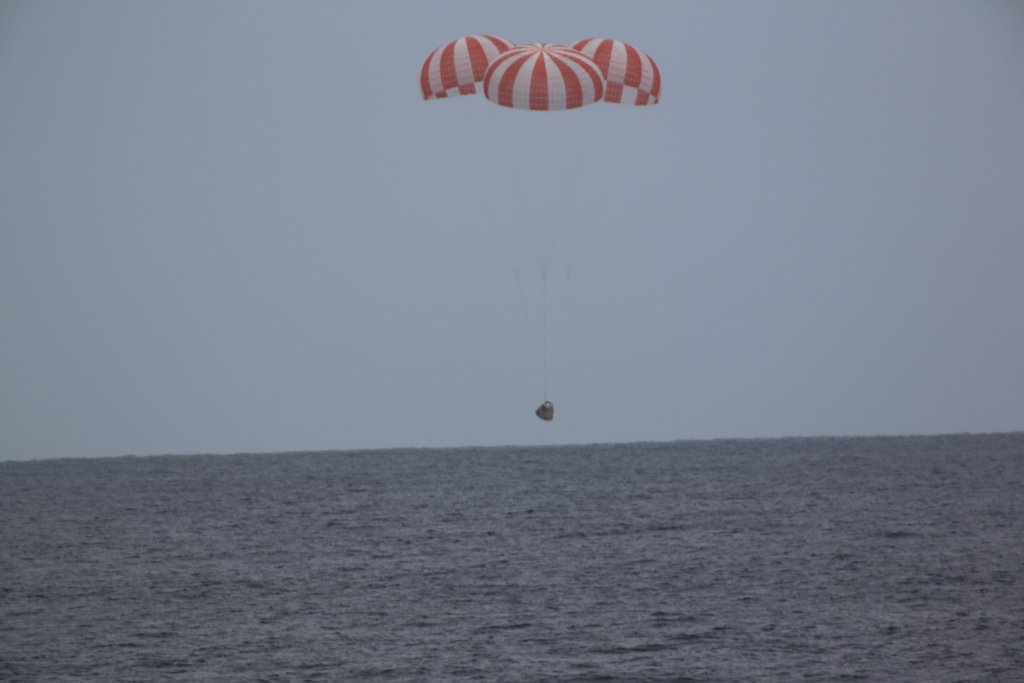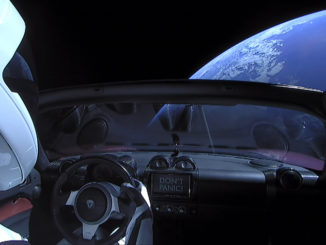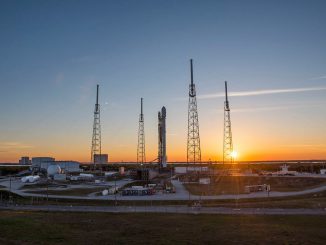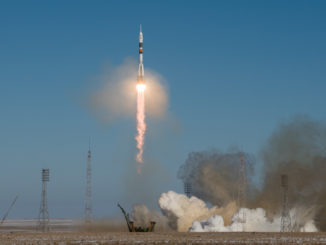
SpaceX’s Dragon supply ship departed the International Space Station on Wednesday, fired rocket thrusters to brake out of orbit, and parachuted to a picture-perfect splashdown in the Pacific Ocean with approximately 3,461 pounds (1,570 kilograms) of experiment samples and equipment.
Concluding a 31-day stay at the outpost, the 12-foot-diameter (3.7-meter) spacecraft detached from the space station’s Harmony module early Wednesday in the grasp of the research lab’s Canadian-built robotic arm, which maneuvered the capsule to a release point about 30 feet, or 10 meters, beneath the complex.
European Space Agency flight engineer Tim Peake gave the command for the robotic arm to let go of Dragon at 9:19 a.m. EDT (1319 GMT) as the space station sailed 260 miles (418 kilometers) off the coast of Australia southwest of Adelaide.
“The Dragon spacecraft has served us well, and it’s good to see it departing full of science, and we wish it a safe recovery back to planet Earth,” Peake radioed mission control.
In quick succession, the Dragon spacecraft fired its Draco thrusters three times shortly after its release from the space station to depart the vicinity of the orbiting research outpost.
A few hours later, SpaceX engineers at the company’s headquarters in Hawthorne, California, commanded Dragon’s guidance, navigation and control bay door to close, sealing the spaceship for the fiery trip back to Earth.
Dragon ignited its Draco engines at 2:01 p.m. EDT (1801 GMT) for about 10 minutes to nudge the craft out of orbit. Minutes later, the spacecraft’s disposable unpressurized trunk section jettisoned to burn up in the atmosphere.
Protected by an ablative carbon-based heat shield, the gumdrop-shaped capsule plunged into the atmosphere as it soared on a northwest-to-southeast trajectory over the Pacific Ocean, withstanding temperatures of more than 3,000 degrees Fahrenheit before deploying a series of parachutes to slow down for final descent.
Three orange and white main chutes, each measuring 116 feet (35 meters) in diameter, unfurled for the final descent toward the Pacific about 261 miles (420 kilometers) southwest of Long Beach, California.
The spaceship reached the Pacific Ocean for an on-target splashdown at 2:55 p.m. EDT (1855 GMT).
SpaceX did not provide live video of the splashdown, but the company released periodic updates during the landing sequence on Twitter.
SpaceX tweeted that company personnel aboard recovery vessels arrived at the splashdown zone soon after the capsule’s return: “Dragon recovery team on site after nominal splashdown in Pacific.”
The recovery crew will hoist the capsule aboard a ship and set course for Long Beach, with arrival due as soon as Thursday to remove time-sensitive experiment samples carried aboard the spacecraft. The Dragon capsule itself will be transported to SpaceX’s rocket test facility in McGregor, Texas, to offload toxic substances from the spaceship and finish unpacking the rest of the mission’s cargo.
The Dragon spacecraft launched April 8 aboard a Falcon 9 rocket and reached the space station two days later, taking more than 7,000 pounds of provisions and experiments for the space station and its six-man crew.
An inflatable experimental module made by Bigelow Aerospace was among the payloads delivered by Dragon. It was attached to the space station’s Tranquility module and will be expanded later this month to test concepts for future space habitats.
Astronauts stowed 3,461 pounds (1,570 kilograms) of cargo into Dragon’s pressurized compartment in the last few weeks. With packaging, the total returned mass comes to more than 3,700 pounds.
The Dragon returned about 1,292 pounds (586 kilograms) of science gear, including more than 1,000 tubes of blood, urine and saliva samples from astronaut Scott Kelly’s nearly one-year expedition on the space station, which ended March 1.
Researchers are eager to analyze the specimens to study how Kelly weathered the long-duration mission. They will compare the results to Scott’s twin brother Mark Kelly, a retired space shuttle commander who contributed similar fluid samples to study the health of two genetically identical individuals over the course of the year.
Dragon also brought home a balky spacesuit that sprung a water leak during a January spacewalk. Astronaut Tim Kopra safely returned to the space station after he reported a small water bubble in his helmet, but the problem prompted a premature end to the excursion.
Engineers will investigate the cause of the water leak in the spacesuit, and potentially repair it to be re-launched to the space station.
It is the same spacesuit that leaked a more significant amount of water into the helmet of astronaut Luca Parmitano in 2013, a frightening episode that threatened to drown the Italian spacewalker.
A failed sequential shunt unit, or SSU, was also aboard SpaceX’s Dragon spaceship for the journey home Wednesday. Astronauts replaced the failed voltage regulator during the January spacewalk before Kopra’s spacesuit began leaking water.
The SSU failed last year, knocking out one of the space station’s eight power channels until it could be replaced.
The Dragon spacecraft is the only vehicle capable of returning large items from the space station for refurbishment and repairs.
Engineers used to bring back tons of equipment when the space shuttle regularly visited the space station, but officials are more selective in what to return to Earth aboard Dragon, according to Mark Mulqueen, the space station program manager at Boeing, NASA’s prime engineering contractor for the complex.
“Shuttle gave us the ability, with so much down-mass, to do everything,” Mulqueen said in a recent interview with Spaceflight Now. “We don’t do everything now, but we do what’s smart. NASA and Boeing look at the price to replace something, start from zero or start from a known failure and (see) how much it costs to repair, and we decide.
“Some things are too big to get inside Dragon,” Mulqueen said. “An ammonia tank, for example, you don’t bring it inside the modules. You could have saved it with shuttle because it’s out in the cargo bay, but you don’t want to bring it into the pressurized modules. There are limits now, but we’re still doing, just smartly.”
Spaceflight Now members can read a transcript of our full interview with Mark Mulqueen. Become a member today and support our coverage.
Wednesday’s splashdown marks the end of SpaceX’s eighth operational cargo flight to the space station.
Led by Elon Musk, the billionaire tech mogul, SpaceX has a multibillion-dollar contract with NASA to deliver supplies to the outpost and bring some items home. The company has 26 resupply missions contracted with NASA — including the eight already in the books — under two separate cargo delivery deals.
NASA also has contracts with Orbital ATK and Sierra Nevada Corp. for space station logistics flights.
SpaceX’s next cargo mission is set for launch in late June from Cape Canaveral.
Email the author.
Follow Stephen Clark on Twitter: @StephenClark1.



